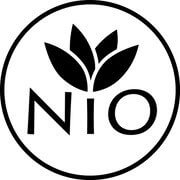We often are asked how to make loose leaf tea without an infuser, and there are a few different ways you can use this. While the kyusu teapot is the best way to prepare Japanese green tea, if you don’t have one there are a few other solutions you can try out with basic household tools. In this article, we are going to cover 14 different ways how to make loose leaf tea without an infuser. Let’s get started!
So how to make loose leaf tea without an infuser? Here are all alternatives available:
If you are looking for how to make loose leaf tea without an infuser, luckily for you there are quite a few options. These options range in difficulty and effectiveness, and we’ll be sure to highlight the ones we find particularly useful. If you find one that requires supplies you do not have , simply move on to the next idea in the list!
Stainer technique
The strainer technique is among the best because it requires very few moving pieces. If you have a strainer at home, this can be a great tool for preparing loose leaf tea. A recurring theme you may notice when we talk about how to make loose leaf tea without an infuser is that you need to both provide space for the leaves to expand, but also have a way to filter them after they’ve been infused. While the strainer is not quite as good as a teapot, it is still much better than a teabag.
Method
If you have a proper tea strainer, you can simply put 5 grams of leaves into the strainer and then submerge it into a cup of warm water. Once the brewing time is up, you simply take the strainer out and put it on a dish or paper towel so the remaining water can filter out of the leaves.
If you are using more of a general kitchen strainer that is not designed for tea, you can just use it as a filtering device. Brew the leaves in another container (a few of them will be mentioned later) and then pour the water through the filter into a cup to sort out the leaves.
Cup technique
If you really don’t have access to any tools whatsoever, one method you can use is the cup technique. This probably the least effective but by far the easiest to pull off. All you need to accomplish this technique is some leaves, some water and a cup.
Method
Simply put about 5 grams of leaves at the bottom of the cup, pour in some warm water and let it sit for about a minute. As the tea leaves fill up with water, they will become heavier and sink to the bottom of the cup. Very carefully, without disturbing the cup of tea, you can sip the drink slowly from the surface where less of the leaves are. Already you can probably notice a few flaws with this technique. The tea will overbrew, and you will get the occasional leaf in the mouth that can affect your tea drinking experience. This method is not perfect, but it is one way how to make loose leaf tea without an infuser or any other tools mentioned on this list.
Double cup technique
One step up from the single cup technique is the double cup technique. If you have access to 2 different cups you can try this out. It will be slightly better than the single cup technique, but still far from perfect.
Method
For this you will have almost the exact same setup as with the single cup technique. Once the leaves have settled to the bottom of cup number 1, you can slowly pour it into cup number two. Even if some leaves make it into cup number 2, it is still better than what you had before with the single cup technique. The trick here is to pour very steadily, without agitating the tea to ensure that you are just pouring out the top layer of tea and not the leaves.
Pot technique
You may have a teapot at home that doesn’t have a built in strainer or a detachable strainer that has been lost. If you want to prepare tea this style, you will just need to find a sieve.
Method
Brew the tea leaves in the teapot just as you normally would. Once the tea is done brewing, pour the tea out into a cup, but this time put a strainer over the cup so it filters out the leaves. This will make sure that no leaves end up in your cup and the brewing stops when the time is up.
Tea Bag technique
Of course we all know that a teabag can be used to infuse tea. What you may not know is that teabags are actually a pretty bad tool for brewing tea, because they don’t give the leaves enough space to expand and release their flavor into the water. If you are desparate, you can try an make your own teabag out of an empty teabag and some loose leaf tea.
Method
First add 5 grams of loose leaf tea to your empty teabag and seal it up. When we are traveling around Japan on tea sourcing trips, we use these empty silk teabags and fill them up with loose leaf tea. This makes it so that we don’t need to put our precious clay teapots into harms way just to enjoy good green tea on the road.
You should be able to easily seal up the teabags and then you can put them into a cup and add some warm water. Once the brewing time is up, your teabag is ready to come out and your tea is ready to drink. You can also prepare a few of these homemade teabags ahead of time if you know you are going to a place where you won’t have much access to teaware.
Coffee Filter technique
Of course you can also use a coffee filter to prepare loose leaf tea. For this you will need a coffee filter and preferable some type of pourover device, although this is not completely necessary.
Method
If you have a pourover coffee maker, you can try and make a slow drip green tea. Just put the tea leaves into the coffee filter and slowly pour in some water, up to 150ml. You’ll find that because the coffee filter is so fine, it will take a long time to drip through, which is just enough time to extract some flavor from the leaves.
If you don’t have a pourover device and you just have the coffee filter paper, you can try to make a teabag. Place the tea leaves in the middle of the coffee paper, fold it up well and repeat the steps from the previous section. Make sure you are using the white coffee paper, as the brown coffee paper can really influence the taste.
French Press technique
If you don’t have a teapot at home, a french press can be the next best thing. As we mentioned before, when it comes to how to make loose leaf tea without an infuser, all you need is to provide the leaves with enough space, and you need to filter them out of the water after they are done brewing. The french press provides both of these!
Method
Add 5 grams of tea leaves to the french press and then pour in 150ml of water. The put the plunger and top on the french press, but don’t push it down yet. Once a minute has passed, push the plunger down just until it reaches the leaves, but no further. If you push it down too far, it will squeeze the bitterness out of the leaves. This will partially stop the brewing, but the tea will still get bitter if it is left for too long like this. You can then just pour out the tea and you should have no leaves in your cup!
Sieving the tea technique
If you have a sieve at home, this can make it easy to prepare loose leaf tea without a teapot. This is a key component of the equation, because once you have a way to filter the leaves out of the tea, now all you need is a container to brew the tea. This could even be a cup of a glass.
Method
put 5 grams of tea leaves into a tea mug and add in 150ml of water. Give the leaves 1 minute to brew and then pour them into a separate cup through the sieve. The mug will allow the leaves enough space to release their flavor and the sieve will separate them out when you’re done brewing.
Gaiwan technique
This is the original improvised teaware. The gaiwan or lidded bowl is just about as simple as it gets. All it consists of is a small cup with a dome shaped lid on top. This is actually the tool of choice for many serious tea drinkers and you don’t even need a filter to use it!
Method
put 5 grams of tea leaves into the gaiwan and fill the rest up with water. The water level should be just under the rim, giving you enough space to move the cup around without spilling. Once the brewing time is up, you can put the lid on top of the gaiwan, leave a small little gap on one side between the lid and bowl and pour the tea through that. This gap between the lid and the bowl will allow water to pass through without letting the leaves pass through.
Paper towel technique
This is the sequel to the homemade teabag technique. For this, you will essentially be making your own paper teabags out of a paper towel.
Method
Just lay a square of paper towel out on a dry kitchen table, put 5 grams of loose leaf tea in the middle and roll it up. You now essentially have a homemade paper towel teabag you can use to infuse your loose leaf tea!
The fork technique
If you don’t have a sieve at home, you can try using a fork instead. This method can be good because it only requires tools that most people have access to like a fork and a tea mug.
Method
First brew the tea leaves in a cup of water, just like you would with the cup technique. Once the leaves are done brewing, you can pour them out into a separate cup, but position the fork at the edge of the mug so that the water passes through the tines of the fork. This should stop the leaves from flowing into the second cup, but admittedly it does take some practice.
The Slotted Spoon technique
This is essentially a repeat of the fork method, but with a slotted spoon instead. Let’s check it out!
Method
For this method, you are transitioning the tea from the brewing cup to the drinking cup, but you ar epouring it through the slotted spoon. This tool works much better than a fork because it is broader with more space to sift. With a good slotted spoon, you should be able to figure out how to make loose leaf tea without an infuser in no time!
Tin Foil Infuser Technique
This is one of the more interesting techniques, and it essentially involves making your own teabag out of tinfoil. The benefit of tinfoil over paper is that it won’t unfurl as it brewers, so it will be easier to keep the “teabag” closed and the leaves inside when you brew the tea.
Method
First, take a small sheet of aluminum foil and put the tea leaves in the middle. The you can wrap up the bottom of the tin foil package so the tea leaves don’t fall out and then roll it up (like a burrito). Next you can poke a small hole or two in the bottom using a knife or scissors and then put the tin foil teabag into warm water. This method will allow the tea leaves to infuse, but the teabag should be able to maintain its shape throughout the brewing.
What are the best tools to brew loose leaf tea:
#1 Kyusu
The kyusu teapot is the best tool for preparing loose leaf, Japanese green tea. it gives the leaves plenty of space to expand and release their flavor into the water, and it has a built in filter to sift out the tea leaves automatically as you pour. The kyusu even has a side handle that makes pouring easier, and keeps your hands from getting burned by the teapot itself.
If you want a free kyusu teapot, we will send you one when you sign up for our monthly tea club. With this offer, we’ll send you some of the best green teas we’ve found from all over Japan at a big discount. Try tons of amazing, organically grown green teas and get all the tools you need in order to prepare them!
#2 Shibooridashi
The shibooridashi can be a great tool for preparing Japanese green tea as well, but it is mostly desgned premium teas like Gyokuro. This teapot has a very flat design, which maximizes the surface area at the bottom. This is good for preparing tea with a high leaf to water ratio. You may see a tea master prepare gyokuro in a shibooridashi with 5-10 grams of leaves and only 50ml of water to really maximize the flavor
#3 Houhin
The houhin is another good teapot for premium Japanese green tea. This teapot does not have a side handle and instead it is used with the “3 fingers method”. The teamaster pours the teapot with one finger on each side of the teapot and one knuckle on the top lid to prevent the hand from getting burned.
#4 Gaiwan
The gaiwan is a simple piece of teaware we mentioned before. It can work great for larger leafed Chinese teas, but it can be very difficult to prepare Japanese green teas like Fukamushi sencha. The reason for this is that it is hard to set the gap between the lid and the bowl to a size that is small enough to stop the small leaf particles from flowing into the cup. If this is not a problem for you, then go ahead and use it!
#5 Yixing Clay teapot
This is the Traditional Chinese clay teapot, and it can work great for Chinese teas. It is very small, so it works best when it comes to preparing teas with a high leaf to water ratio, as seen in the gonfu style. This brewing concentrates the tea, and gives you a smaller quantity of super flavorful tea that is meant to be sipped very slowly.
Why shouldn't you use tea bags to infuse loose leaf tea?
The taste of loose leaf tea is much better than that of teabags. This is for a number of different reasons. Teabags tend to be mass produced, and therefore they can’t be made from the best leaves of the tea plant. They are instead made from later harvested or older tea leaves. This not only lowers the nutrient content of the leaves, but also the flavor as well. The leaves also need to be packed into the teabags, so they have to be ground into much finer pieces. During this process, the leaves lose a lot of their natural essential oils, which is what gives tea its complex flavor and aroma.
These loose leaf Japanese green teas are picked during the first harvest and they’re made from the most nutrient dense tea leaves. They also are able to keep a lot of their natural flavors, instead of being ground up into a teabag. The leaves are tightly rolled so they can retain their flavor during storage. Once these leaves are put into water for the first time, they will finally expand and release their flavor into a beautiful green infusion.
If you are interested in trying loose leaf green tea, we recommend you try out the mega green tea sampler. This is a selection of the 30 best organically grown green teas we’ve found during our travels around Japan. This sampler includes matcha, sencha, gyokuro, hojicha, genmaicha and more! Try out all these premium loose leaf teas and see which ones you like most!




